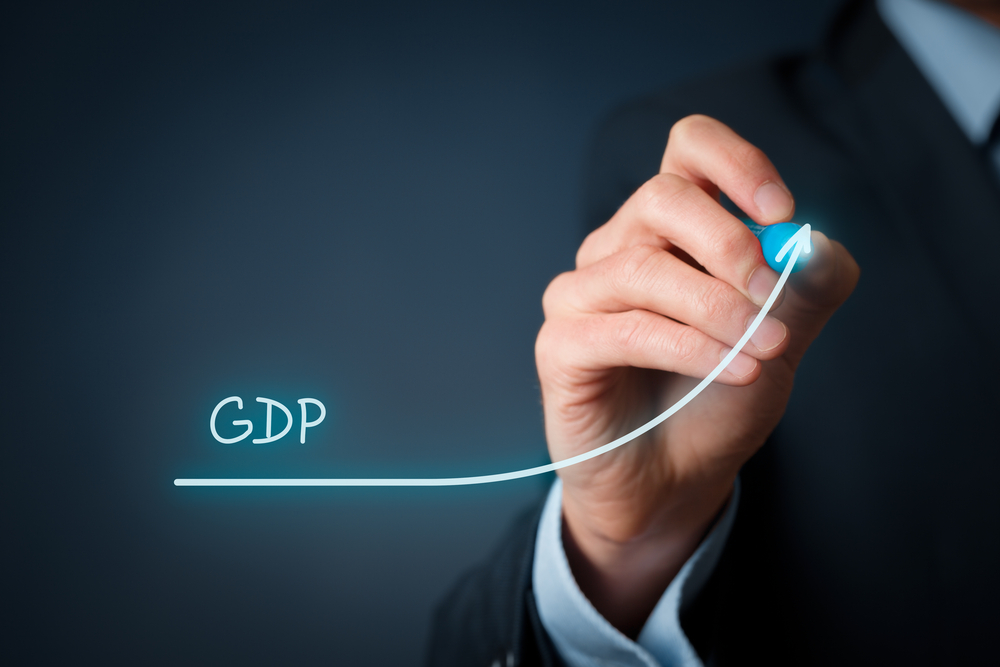First Quarter Economic Recovery Approaching Pre-Pandemic Level

Author: Michael Stern
Last Updated: 6 May 2021
The rapid rollout and wide acceptance of COVID-19 vaccines are starting to pay dividends. The number of people having to be hospitalized, and the number of deaths, are both falling quickly, especially among the older generation.

This is good news. The burst of activity as a result of the vaccine program has put the economy in the first quarter of the year not far below what it was pre-pandemic. Based on data, trends, and expectations, this year is shaping up to be a consumer-driven recovery.
Recent statistics from the Commerce Department show the GDP (Gross Domestic Product) grew at a seasonally adjusted rate of 6.4 percent. This rate of growth puts the U.S. economy within 1% of the peak just before the coronavirus outbreak in late 2019.
Stimulus Money to Spend
Many households have been fully vaccinated and anxious to spend the hundreds of millions of dollars in stimulus money provided by the federal government. The availability of stimulus money has proven to be the driver.
People are buying big-ticket items, everything from cars to furniture to bicycles. The federal government also is doing its part by increasing spending on vaccines and help for struggling businesses.
If asked a year ago where the economy might be today, Gregory Daco, Oxford Economics economist said he would not have suggested the economy would have recouped to pre-pandemic levels. He went on to say that this crisis brought on not only an unprecedented contraction in the economy but also an extremely rapid response by the government.
A recently opened bicycle shop in Pennsylvania is getting requests for new bikes from as far away as the west coast. The co-owner of the shop, Ted Houser, says shops all across the country are running out of stock and bike manufacturers are having considerable difficulty filling orders. A simple repair that used to be done in less than a day now might take weeks as components are becoming difficult to source.
Houser says customers are saying “This is stimulus money, take it.” He went on to say, “I think the demand is more a lifestyle issue, biking is an activity that can be done during the pandemic.”
The Change in a Year
As little as a year ago, the economy was rapidly shrinking. Second-quarter output dropped by over 31 percent and unemployment soared to almost 15 percent, a post-WW-2 high.
It took Congress little time to act, quickly approving approximately $5 trillion in aid for businesses and households. To lower borrowing costs, the Fed dropped interest rates to near zero percent.
In the last four months, many millions of households have received one shot of the COVID-19 vaccine at least. Economists are saying the upshot of the actions taken is the speed at which the U.S. economy is recovering. This is a far cry from the 2008 financial crisis when countries such as China led the way while the U.S. lagged well behind.
Three Successive Quarter of Growth
There has been substantial economic growth for the last three quarters. The unemployment rate has fallen to six percent from 15 percent, and claims for jobless benefits have fallen in recent weeks.
Most households have received $1,400 stimulus payments this spring, this, on top of two previous stimulus efforts. A combination of stimulus money and money saved by not eating out or traveling has enabled people to purchase a wide range of goods they might otherwise not have purchased.
Supply Falling Behind
With the increase in consumer spending, signs of failure in the supply chain are beginning to show. Last week, Caterpillar, Inc. told investors that supply-chain issues may become an issue, making it increasingly harder to meet demand as the economy recovers.
BWCEvent aspires to share balanced and credible details on cryptocurrency, finance, trading, and stocks. Yet, we refrain from giving financial suggestions, urging users to engage in personal research and meticulous verification.


